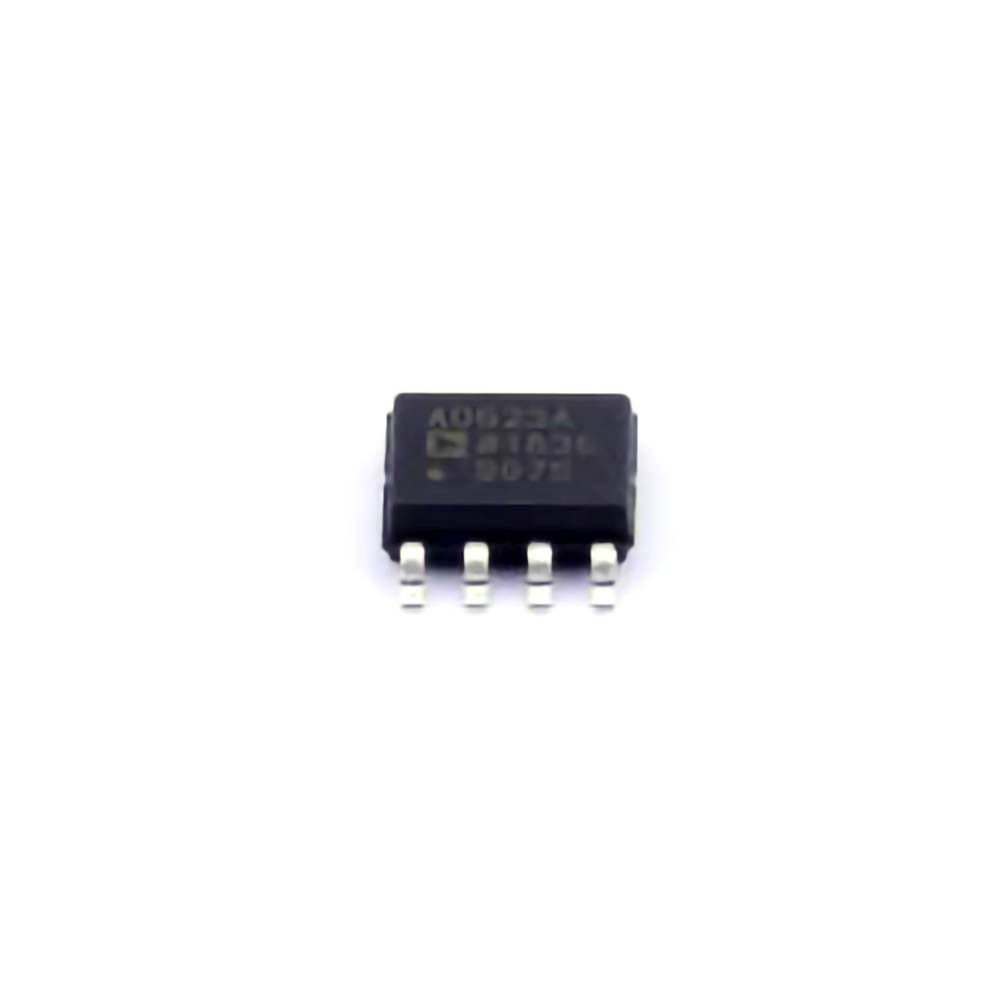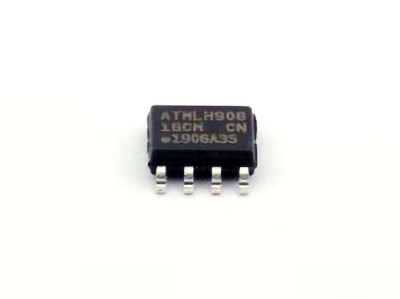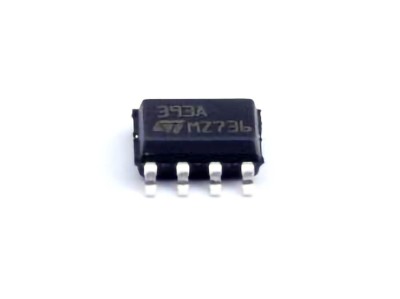
The AD623ARZ -R7 is a popular precision instrumentation amplifier, prized for its ability to amplify differential signals while rejecting common-mode noise. It is often employed in sensor applications, medical devices, and industrial equipment. However, as with any complex component, users may encounter various issues when designing and implementing circuits with the AD623ARZ-R7 . This article provides a practical guide to troubleshooting common problems with this device.
Understanding the AD623ARZ-R7
Before diving into troubleshooting, it’s important to understand the functionality of the AD623ARZ-R7. This chip is a low- Power , high-precision instrumentation amplifier that combines high input impedance and excellent common-mode rejection ratio (CMRR). It is designed to work with low-level differential signals, often from sensors or other measurement devices, and amplifies them to a level that can be processed by standard analog-to-digital converters (ADCs) or other signal processing units.
Common Issues with AD623ARZ-R7
No Output or Low Output Voltage
One of the most common problems users face with the AD623ARZ-R7 is the absence or insufficient output voltage. This issue can arise due to several reasons:
Incorrect Power Supply: Ensure the amplifier is correctly powered within the recommended range (±2V to ±18V). Insufficient power supply can prevent the device from functioning.
Improper Input Signal: If the differential input voltage is too small or too large for the AD623ARZ-R7 to handle, it may not provide the expected output. The device has an input voltage range limitation that must be respected.
Faulty Connections: Always double-check all connections, especially the ground and reference pins. A floating ground or an unconnected reference pin can result in no output signal or a distorted one.
Poor Common-Mode Rejection
The AD623ARZ-R7 is renowned for its high CMRR, but issues can still arise, particularly if:
Incorrect Gain Configuration: The AD623ARZ-R7 allows users to configure its gain using an external resistor (R_G). If the resistor value is too low or too high, it may affect the CMRR.
Excessive Common-Mode Voltage: Ensure that the common-mode voltage is within the specified range. Applying a common-mode voltage beyond the allowable limits can degrade the CMRR performance.
Distorted or Noisy Output
Distortion or noise in the output signal is another frequent issue, which could stem from:
Power Supply Noise: Noise in the power supply can be coupled into the output, especially when using high-gain settings. Adding decoupling Capacitors close to the power supply pins can help filter out high-frequency noise.
External Interference: Make sure to shield the circuit from external electromagnetic interference ( EMI ). Long wires and unshielded cables can act as antenna s, picking up unwanted signals.
PCB Layout Issues: A poorly designed PCB layout with inadequate grounding or routing can lead to noise. Ensure that the ground planes are properly connected and that high-impedance nodes are kept away from noisy traces.
Overheating or Excessive Current Draw
In some cases, users may observe that the AD623ARZ-R7 gets excessively hot or draws too much current. This could be indicative of:
Short Circuits: Double-check all circuit connections, especially the power supply and output pins, for possible shorts.
Improper Load: If the output is driving a load that draws more current than the device can supply, it may lead to overheating. Verify that the load impedance is within the recommended range for the AD623ARZ-R7.
Instability or Oscillations
Instability, such as oscillations or unintended high-frequency signals, can occur when the AD623ARZ-R7 is used in a circuit without proper compensation. To resolve this:
Bypass capacitor s: Adding bypass capacitors (typically in the range of 0.1µF to 10µF) between the power pins can help reduce high-frequency oscillations.
Feedback Resistor Stability: Ensure the feedback resistor used to set the gain is stable and does not introduce parasitic elements that could cause instability.
Key Steps for Troubleshooting
When faced with any of the issues mentioned above, here is a systematic approach to troubleshooting the AD623ARZ-R7:
Verify the Power Supply: Confirm that the amplifier is receiving the correct voltage within its operating range. Measure the voltage at the power pins using a multimeter to ensure proper functionality.
Check Input and Output Connections: Inspect all signal and ground connections. An open or loose connection can result in faulty or absent signals.
Review the Gain Configuration: Check the external resistor used to set the gain. Ensure that it falls within the recommended range for your application.
Examine the Circuit Layout: Ensure that the PCB layout adheres to best practices. Good grounding, short signal paths, and adequate decoupling capacitors will significantly improve performance.
Test Under Load: If the device is overheating or drawing excessive current, remove the load and check if the issue persists. If it resolves, the problem may be with the load impedance or the output stage.
Advanced Troubleshooting Tips
In addition to the basic troubleshooting steps, more advanced techniques can help diagnose issues with the AD623ARZ-R7 in more complex applications.
Signal Integrity Analysis
If the output is noisy or distorted, you may need to perform a more detailed signal integrity analysis. Using an oscilloscope, you can observe the input and output signals at different points in the circuit. Check for signs of clipping, distortion, or noise spikes. Pay special attention to the rise time and fall time of the signals, as these can provide insight into the root cause of the issue.
Temperature Sensitivity
Some issues with the AD623ARZ-R7 may be temperature-dependent. If the amplifier’s performance changes as the temperature fluctuates, check for thermal drift. Make sure the device is within its specified temperature range (–40°C to +85°C for the AD623ARZ-R7). Heat-sensitive components or poor thermal management (e.g., insufficient heat sinking) can exacerbate performance issues. If necessary, use a heat sink or improve airflow to reduce the temperature.
Ensure Proper Grounding
Grounding issues are a frequent cause of operational problems, especially in high-precision amplifiers like the AD623ARZ-R7. Ensure that the ground is a solid reference point for all components. Poor or floating ground connections can lead to instability and noise. In complex systems, consider using a dedicated ground plane to minimize ground loop effects and potential noise coupling.
Use of Differential Probes
In scenarios where the AD623ARZ-R7 is used to amplify very small differential signals, using a differential probe to monitor both the input and output simultaneously can provide invaluable insight into the integrity of the signal. Differential probes help eliminate the common-mode noise that might affect regular single-ended probes.
Look at Input Bias Current Effects
The AD623ARZ-R7 has a small input bias current (typically in the range of 1nA to 5nA), which can become an issue in high-impedance circuits. Ensure that any resistors connected to the input pins are not too large, as this can cause voltage offsets. Using resistors in the kΩ range or lower will minimize the effects of input bias current.
Final Thoughts
Troubleshooting the AD623ARZ-R7 may seem daunting at first, but with a systematic approach, most issues can be resolved quickly. The key to effective troubleshooting lies in understanding the basic principles of the device and examining the system as a whole, including power supply, signal integrity, component placement, and load conditions. By following this guide, you can ensure that the AD623ARZ-R7 performs optimally and continues to deliver accurate, reliable measurements in your application.
In summary, whether you're dealing with signal issues, power problems, or simple configuration errors, the AD623ARZ-R7 is a versatile and robust device that, when used correctly, can provide exceptional performance for your analog signal processing needs. By following the troubleshooting steps outlined in this article, you will be well-equipped to solve any common issues and get the most out of your AD623ARZ-R7 instrumentation amplifier.
Partnering with an electronic components supplier sets your team up for success, ensuring the design, production, and procurement processes are quality and error-free.


